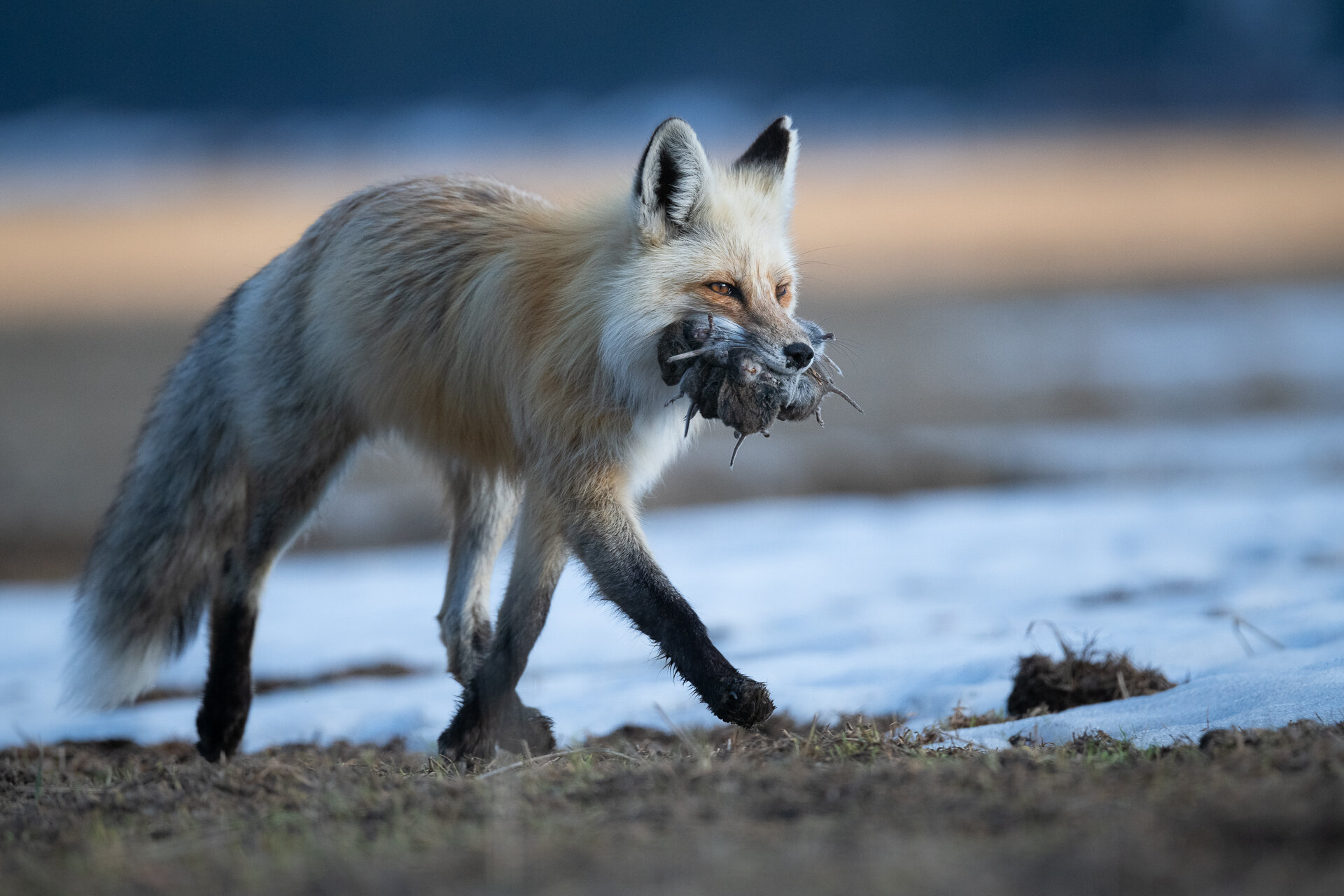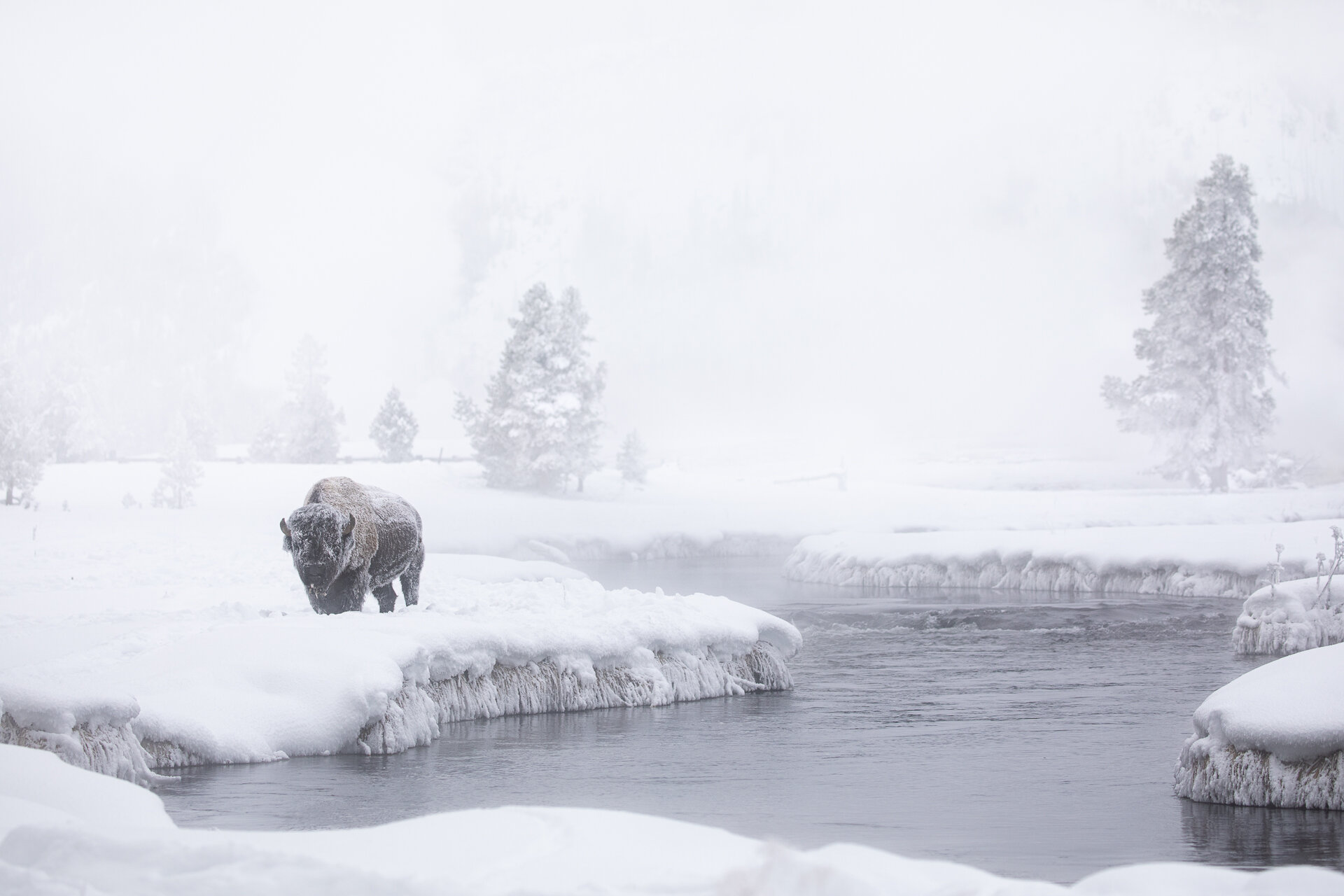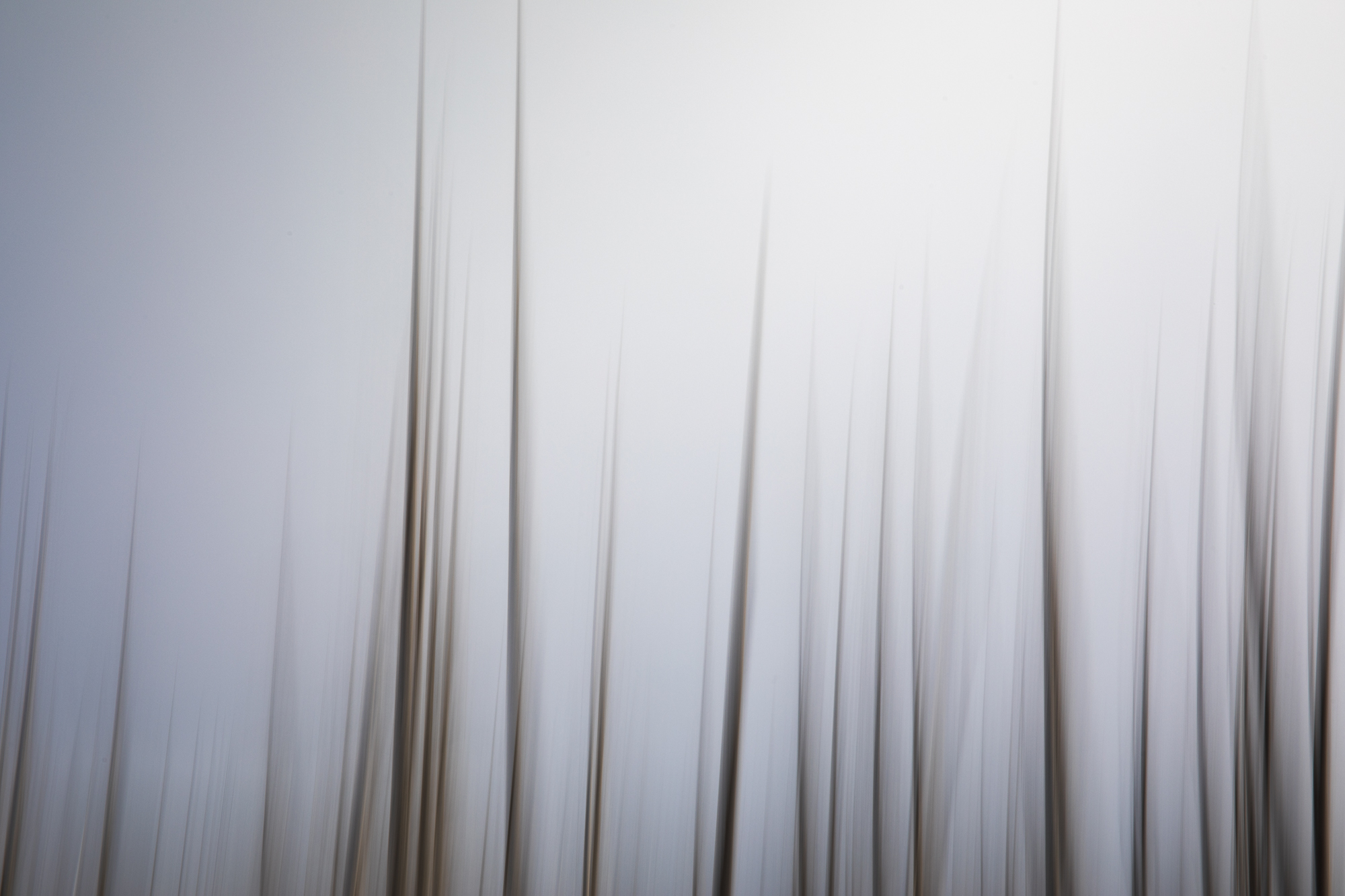For several days the fox hunted on this thin layer of snow and buried her prey in the ground nearby. Now, she has more food than she can carry in one trip. With a moth full of voles, she heads off, presumably to a den where young kits are hiding.
Lone Bison
A lone bison grazes along the Firehole in Yellowstone National Park.
Presence of the Canada Lynx
Besides the shocking disproportionate size of their feet, the calm and mesmerizing presence of the Canada Lynx is what stands out to me. Unlike most other cat species, the lynx I’ve encountered appear to be relatively comfortable with me, often sitting down and watching me before stealthily vanishing into the forest cover.
Sunrise on the Firehole River
Sunrise on the Firehole River in Yellowstone. Yellowstone has no shortage of breathtaking rivers, but the Firehole is certainly chief among. Here, the water pools up before a waterfall plunges into a canyon.
Falling snow collects on a bull moose as he browses in sagebrush flats
Great Grey Owl in Grand Teton
The phantom of the north hunts the tree line during a snow storm at dusk. Great grey owls may sit perched for hours patiently listening for a rustle of movement beneath the snow.
A small tree growing up under a big shadow
Bull Bison in Grand Teton
This may be my favorite thing to see in the winter...a big bull bison covered in frost. The winter coat of a bison is so well insulating that there isn’t enough heat escaping their body to melt the frost. I’ve been able to photograph this bull several times over the last couple years. His exceptionally red coat, and the red patch on his face, make him easily recognizable.
Idaho Farmland
The simple clean landscape of the Idaho farmland near Driggs, ID.
Bighorn Rams in Jackson Hole
Bighorn sheep are fairly elusive for most of the year, as they spend most of their time in the mountains. In the winter they are forced down to lower elevations to feed and become much more visible.
Bobby Sock Abstract in Yellowstone
I tried a slightly different approach to bobby socks trees in Yellowstone. I’ve always loved this stand and how symmetrical they are. The temps weren’t cold enough for fog this morning, so I used a motion blur technique to soften the image a bit.
Red Fox in Grand Teton
There are few things I find more visually striking than a red fox against the white snow. I found this fox as it was hunting for rodents under the snow. The fox will listen carefully for movement under the snow, turning its head back and forth to pin point the sound before leaping into the air and diving head first into the snow.
Tetons over Idaho
A slightly different view of the Teton Range...seen here from the western side towering over Idaho farmlands.
Summer Elk Behavior
While the cow elk are busy raising their young, the bulls stick together in small bachelor herds. Thanks to the nutritious grazing opportunities summer provides, their antlers, covered in velvet, begin regrowing up to an inch per day.
A cow elk walks the bank of the Madison River with her newborn calf.
Two newborn elk calves prepare to cross the Madison river to join their mothers.
Winter Wildlife Feature II - Wolves
While bison display some impressive adaptations for surviving winter, they, along with other ungulates, share one significant disadvantage during the winter, a lack of speed and agility in deep snow. While this may sound more like an inconvenience, it becomes a matter of life and death when your main predator appears to move through the snow as if it wasn’t there. This is the distinct winter advantage of the wolf. Wolves are made for winter. While their prey struggle and sink in the snow, wolves float relatively effortlessly on the surface. Their secret lies in the design of their paws. A wide round shape, and thin webbing between each toe enables each paw to function as a snowshoe. In the search for prey, a pack of wolves, such as Yellowstone's Wapiti pack featured here, may cover 30 snow covered miles in a day. I encountered these wolves recently on one of my photography workshops in Yellowstone. We followed their tracks for miles before catching up to them along them Gibbon River.




















